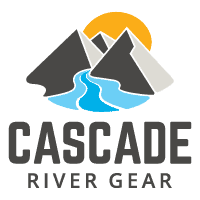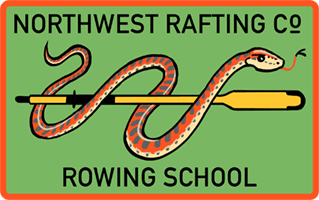Often referred to as “three rivers in one,” the Murtaugh transforms dramatically with the flows, delivering a spectrum of whitewater thrills from the massive, Grand Canyon-sized rapids of high water to the steep, technical drops of low water. At moderate flows (2,000–6,000 cfs), boaters enjoy classic pool-drop action punctuated by big waves and huge horizon lines, while higher flows (10,000+ cfs) fuse into continuous, powerful wave trains. Below about 1,500 cfs, a sub channel emerges demanding a different skill set than other levels. With 20 major rapids, this whitewater adventure—just minutes from Shoshone Falls—is among the most exhilarating day trips in Idaho. The canyon is deep and committing, offering no straightforward exits until the reservoir—a true test of skill and teamwork in the high-desert landscape of the Snake River.
The Murtaugh contains numerous dangerous ledge holes hidden throughout its course. While all are easily avoidable, knowing where they are is critical. Running this stretch with an experienced boater who knows the lines is more important here than on most rivers.
River Flow Info
0 cfs – The Murtaugh runs dry most of the year, as water is diverted for irrigation.
1,200 cfs – Minimum recommended level for kayaks.
1,500 cfs – This is a common flow. Known as the low water level, it packs more of a punch and is far more technical than most levels.
2,500 cfs – The river breaks out of the low water channel, providing more options to maneuver.
4,000 cfs – A “prime” level with exciting pool-drop rapids and big hits.
7,000 cfs – Starts to feel like true big water; large waves and risks of long swims increase.
13,000+ cfs – Huge standing waves and powerful hydraulics.
16,000+ cfs – Significantly increases the risk of long, punishing swims.
25,000 cfs – Known upper range of recent decades.
36,000 cfs – Maximum flow kayakers have run it in 1997. The left island at Pair of Dice was only a rock about 3 ft wide.
Rapids
Troll: Located immediately under the Murtaugh Bridge. Standard line is right of center. A surf wave for kayaks appears at lower flows. At higher flows, large waves become continuous into Knuckles.
Knuckles: Just downstream of Troll. At around 3,000–5,000 cfs, there’s a large breaking wave; enter center-right under the bridge and hit the crest center-left. Above 10,000 cfs, a strong lateral hole forms on the right.

Dropping into Knuckles - Photo: Justin Smith, Adventure Idaho
Maybelline: Near the last road-access point for 12 miles. Enter center-right, watching for a big entrance hole on the left at higher flows. At 2,500 cfs, a notable hole appears in the lower rapid; it’s a big hit but punchable with speed.
Dishwasher: Right after Maybelline. Short and turbulent. Known to flip creek boats end over end. Rafts run center with ease.
Many Unnamed Rapids: A series of Class III–IV pool-drop rapids at moderate flows. Above ~12,000 cfs, they merge into a more continuous big-water run.
Neil's Nemesis: A notably powerful rapid with surf waves at various flows.
Elevator: Short steep rapid at lower flows. Medium flows develop a hazardous ledge hole on the left. At 18,000+ cfs this hole becomes the Elevator Wave - varies between 2-3 stories tall.

Arch above Misty Rapid - Photo: Justin Smith, Adventure Idaho
Misty: Comes up after the second set of power lines over the canyon. The pool above has a small arch on the right side at lower flows. Misty ramps up with some Class II-III before dropping into powerful holes on both sides. Center-left has a hidden hole and the right side has a large ledge hole at lower flows.
Junkyard Rapid: At lower flows, run down the right, staying just left of a boulder hole near the top, then continue through smaller waves. At higher flows, you’ll find surfable waves but watch for ledge holes on the left side of the large black boulder.
Horseshoe: Usually straightforward down the middle, but the current can push left into rocky ledges. A dangerous hole can form on river right above about 4,000 cfs, so avoid drifting too far right in higher water.
Pair of Dice (a.k.a. Paradise): Near the Hansen Bridge—once you see the bridge, get ready. Most parties land on the left island to portage or at least scout. The far-right side hosts the massive “Super Hole,” one of the largest natural holes in North America at moderate to high flows. Missing the island pull-in can force a risky run with consequences. Space out. Have kayakers ready to catch rafts. Coming in with speed has resulted in rafts bouncing off the rock.
Hooker’s Bar: Below Pair of Dice, after a long calm pool. Hug the far-right shore to avoid a hazardous field of ledge holes in the center and left. You have about half a mile of flatwater to set up, so use it.
Let’s Make a Deal: A multi-channeled rapid split by tall island pillars referred to as "doors". The most common run is Door 2. On the far right, Door 5 provides an edge of the world type horizon line and a steep technical chute. Many significant holes hide throughout this section of the river, so commit to your line early.

Door 5, Let's Make a Deal - Photo: Justin Smith, Adventure Idaho
Redshank: A short, steep drop. Look for a rooster tail below 4,000 cfs and run just left of it. Above 5,000, it’s submerged and you can run straight over the top.
Duck Blind: Do not underestimate this drop at 1,500 cfs - a violent lateral hole flips 9/10 rafts! At 2,500–4,000 cfs, it’s big but more manageable down the center. Gets easier as flows increase.
Idaho Connection Rapid: The final major rapid before the reservoir. At low to medium flows, it’s a bouncy wave train. Around 13,000 cfs, the Idaho Connection Wave makes for great surfing. As flows increase, the Toilet Hole grows in size a few waves below the primary drop.

Idaho Connection Rapid at 21,000 cfs - Photo: Justin Smith, Adventure Idaho
Twin Falls Reservoir: About 1.3 miles of flatwater to the take-out. At moderate flows, this is just a mellow paddle out; at very high flows, you’ll have some current.





